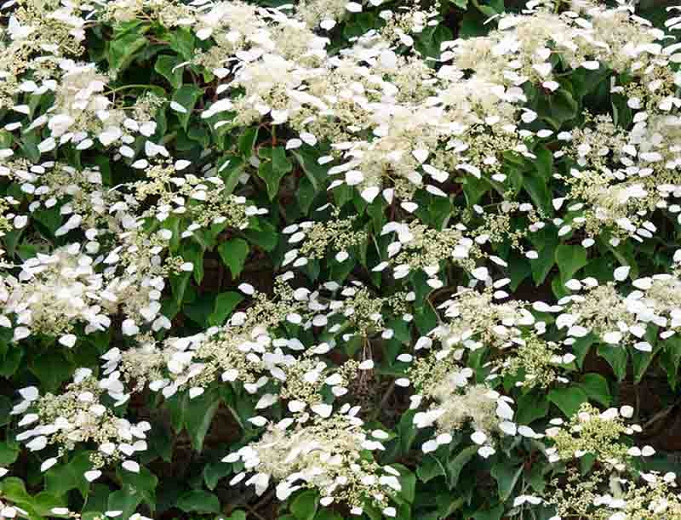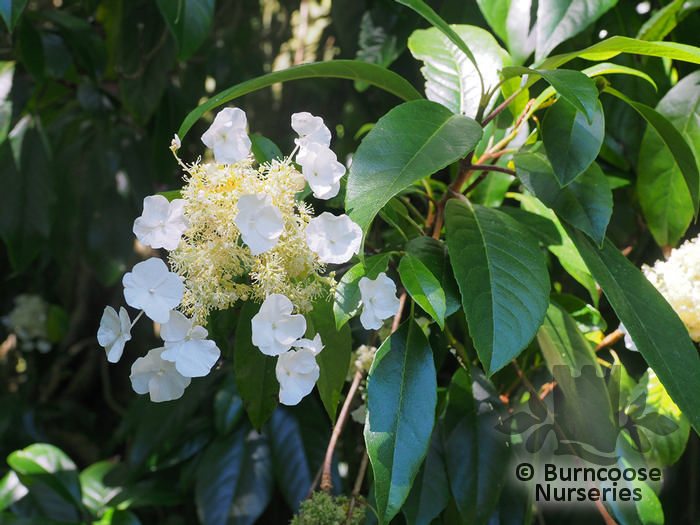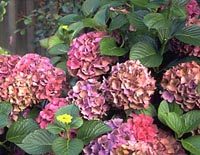The Climbing Hydrangea That Will
The Climbing Hydrangea That Will
Climbing hydrangeas are a beautiful and versatile addition to any garden. They can be used to cover unsightly walls, fences, or trees, and they add a touch of elegance to any outdoor space.
In this blog post, we will discuss the different types of climbing hydrangeas, how to choose the right one for your needs, and how to care for them. We will also provide some tips on how to use climbing hydrangeas to create stunning gardenscapes.
Types of Climbing Hydrangeas
There are three main types of climbing hydrangeas:
- Hydrangea anomala subsp. petiolaris is the most common type of climbing hydrangea. It is a deciduous vine that grows up to 60 feet tall. It has heart-shaped leaves and white lacecap flowers that bloom in early summer.

- Hydrangea seemannii is an evergreen vine that grows up to 40 feet tall. It has glossy green leaves and greenish-white flowers that bloom in late spring or early summer.

- Schizophragma hydrangeoides is a deciduous vine that grows up to 30 feet tall. It has heart-shaped leaves and white or pink lacecap flowers that bloom in early summer.

Choosing the Right Climbing Hydrangea
When choosing a climbing hydrangea, there are a few factors to consider:
- The climate in your area: Climbing hydrangeas are hardy in USDA zones 4-9. However, some varieties are more cold-hardy than others.
- The amount of sunlight your area receives: Climbing hydrangeas can tolerate partial shade, but they will bloom best in full sun.
- The size of your space: Climbing hydrangeas can grow very large, so it is important to choose a variety that will fit in your space.
Caring for Climbing Hydrangeas
Climbing hydrangeas are relatively easy to care for. They need well-drained soil and regular watering. They also benefit from a light application of fertilizer in the spring.
In the fall, it is important to prune climbing hydrangeas to remove any dead or damaged branches. This will help to promote new growth in the spring.
Using Climbing Hydrangeas in the Garden
Climbing hydrangeas can be used in a variety of ways in the garden. They can be used to:
- Cover unsightly walls or fences
- Create privacy screens
- Climb trees
- Add height and interest to flower beds
- Drape over arbors or pergolas
Conclusion
Climbing hydrangeas are a beautiful and versatile addition to any garden. They are relatively easy to care for and can be used in a variety of ways. If you are looking for a way to add some elegance and beauty to your outdoor space, a climbing hydrangea is a great option.
Hydrangea petiolaris, also known as climbing hydrangea, is a beautiful and versatile plant that can add a touch of elegance to any garden. It is a deciduous vine that can grow up to 60 feet long, and its flowers are large and showy, typically white or pink. Climbing hydrangeas are relatively easy to care for, and they can be grown in a variety of climates.
If you are interested in learning more about hydrangea petiolaris, I recommend visiting . This website has a wealth of information about the plant, including its history, care requirements, and propagation methods. You can also find photos and videos of climbing hydrangeas in bloom.
FAQ of hydrangea petiolaris
1. What is hydrangea petiolaris?
Hydrangea petiolaris, also known as climbing hydrangea, is a deciduous climber that can grow up to 30 feet tall. It has oval-shaped leaves that turn golden yellow in autumn, and clusters of white flowers that bloom in summer. Hydrangea petiolaris is a popular choice for covering walls, fences, and pergolas.
2. What are the colors of hydrangea petiolaris?
The flowers of hydrangea petiolaris are white. However, the color of the leaves can vary depending on the soil pH. In acidic soil, the leaves will be a deep green. In alkaline soil, the leaves will be a lighter green or even yellow.
3. Where should I plant hydrangea petiolaris?
Hydrangea petiolaris prefers moist but well-drained soil in shade or partial shade. It is a hardy plant that can tolerate a wide range of climates. However, it is not tolerant of extreme heat or cold.
4. How do I care for hydrangea petiolaris?
Hydrangea petiolaris is a relatively easy plant to care for. It needs regular watering, especially during hot, dry weather. It also benefits from occasional fertilizer applications. In the fall, you should prune the plant to remove any dead or damaged branches.
5. What are some common pests and diseases of hydrangea petiolaris?
The most common pests of hydrangea petiolaris are aphids, spider mites, and scale insects. These pests can be controlled with insecticidal soap or neem oil. The most common diseases of hydrangea petiolaris are leaf spot and powdery mildew. These diseases can be prevented by watering the plant at the base and avoiding overhead watering.
Image of hydrangea petiolaris
- Image 1: A white hydrangea petiolaris climbing up a tree.
- Image 2: A pink hydrangea petiolaris cascading down a wall.

- Image 3: A close-up of the flowers of a hydrangea petiolaris.

- Image 4: A hydrangea petiolaris in full bloom, with its delicate white flowers.

- Image 5: A hydrangea petiolaris growing in a garden, with its leaves turning red in autumn.

Post a Comment for "The Climbing Hydrangea That Will"